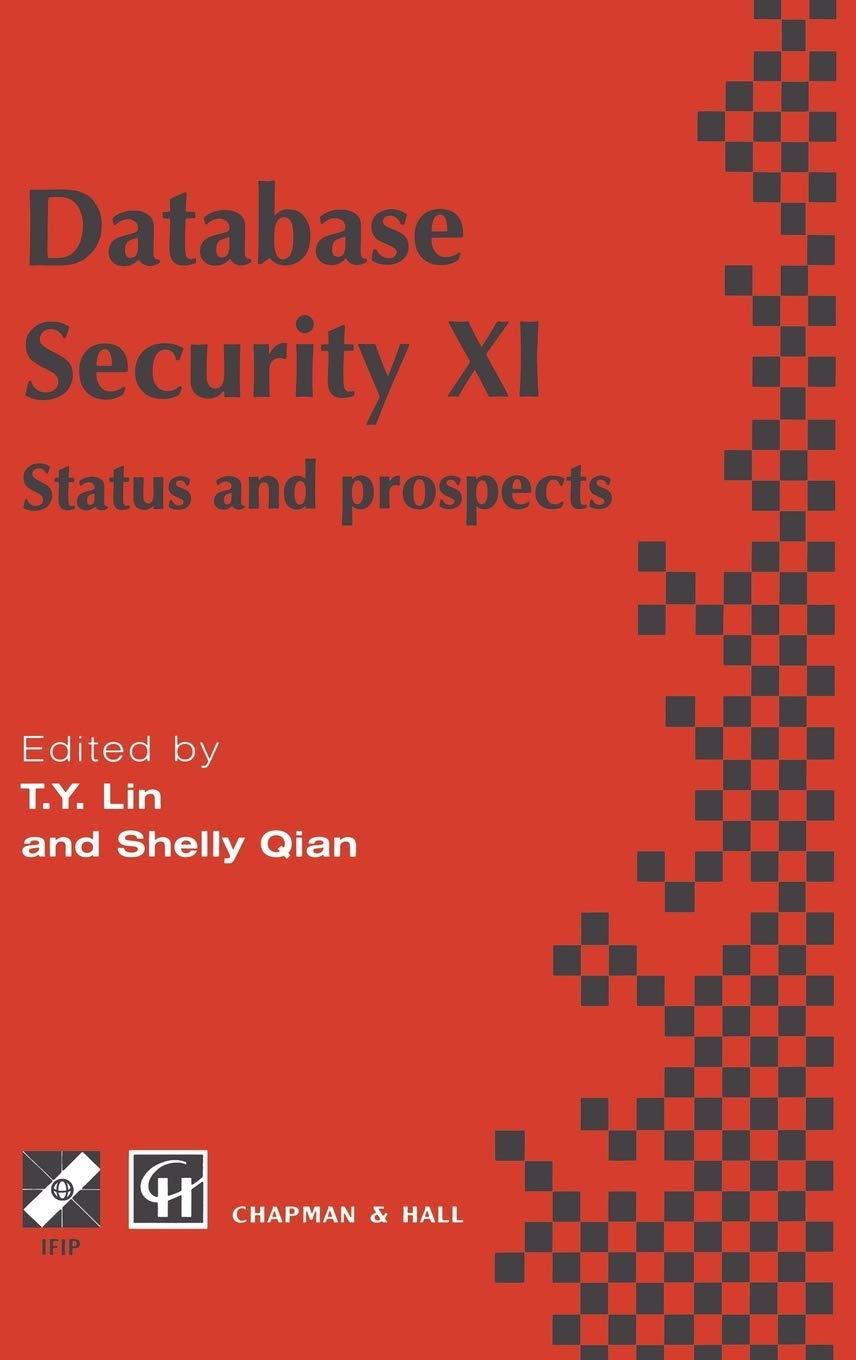Question
You are helping some security analysts monitor a collection of networked computers, tracking the spread of an online virus. There are n computers in the
You are helping some security analysts monitor a collection of networked computers, tracking the spread of an online virus. There are n computers in the system, labeled C1, C2, . . . , Cn, and as input, you are given a collection of trace data indicating the times at 1 which pairs of computers communicated. Thus the data is a sequence of ordered triples (Ci , Cj , tk). Such a triple indicates that Ci and Cj communicated at time tk. Assume there are m triples total. Now let us assume that the triples are presented to you in sorted order of time. For purposes of simplicity, we will assume that each pair of computers communicates at most once during the interval you are observing. The security analysts you are working with would like to be able to answer questions of the following form: If the virus was inserted into computer Ca at time x, could it possibly have infected computer Cb by time y? The mechanics of infection are simpleif an infected computer Ci communicates with an uninfected computer Cj at time tk, (in other words, if one of the triples (Ci , Cj , tk) or (Cj , Ci , tk) appears in the trace data), then computer Cj becomes infected as well, starting at time tk. Infection can thus spread from one machine to another across a sequence of communications, provided that no step in this sequence involves a move backwards in time. Thus, for example, if Ci is infected by time tk and the trace data contains triples (Ci , Cj , tk) and (Cj , Cq, tr), where tk ? tr, then Cq will become infected via Cj . (Note that it is okay for tk to be equal to tr. This would mean that Cj had open connections to both Ci and Cq at the same time, so a virus could move from Ci to Cq.) For example, suppose n = 4, the trace data consists of the triples (C1, C2, 4), (C2, C4, 8) (C3, C4, 8) (C1, C4, 12), and the virus was inserted into computer C1 at time 2. Then C3 would be infected at time 8 by a sequence of three stepsfirst C2 becomes infected at time 4, then C4 gets the virus from C2 at time 8, and then C3 gets the virus from C4 at time 8. On the other hand, if the trace data were (C2, C3, 8) (C1, C4, 12) (C1, C2, 14), and again the virus was inserted into computer C1 at time 2, then C3 would not become infected during the period of observation. Observe, however, that although C2 becomes infected at time 14, C3 only communicates with C2 before C2 becomes infected. There is no sequence of communications moving forward in time by which the virus could get from C1 to C3 in this second example. Design an algorithm that answers questions of this type: given a collection of trace data, the algorithm should decide whether a virus introduced at computer Ca at time x could have infected computer Cb by time y. Prove that the algorithm runs in time O(m). Also, prove the correctness of your algorithm.

Step by Step Solution
There are 3 Steps involved in it
Step: 1

Get Instant Access to Expert-Tailored Solutions
See step-by-step solutions with expert insights and AI powered tools for academic success
Step: 2

Step: 3

Ace Your Homework with AI
Get the answers you need in no time with our AI-driven, step-by-step assistance
Get Started


